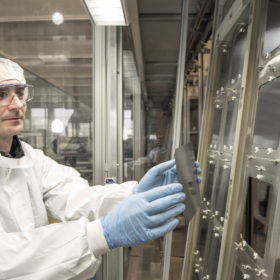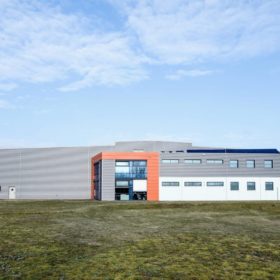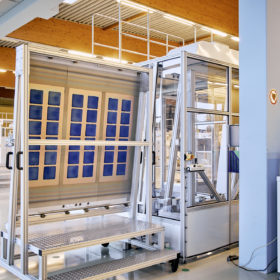The implications of a messy Meyer Burger-Oxford PV divorce for European perovskites
Last week’s announcement Oxford PV wants to wind up its “exclusive cooperation” with Meyer Burger after the fit out of its 100 MW German factory points to a potential divergence in strategies. And with Meyer Burger considering legal action in response, it could result in a messy, disruptive separation.
Meyer Burger considers legal action as Oxford PV unilaterally terminates exclusive cooperation
Meyer Burger claims machines to produce perovskite tandem solar cells are still missing at Oxford PV’s manufacturing plant in Germany’s Brandenburg an der Havel. Despite this, Oxford PV terminated the cooperation with the turnkey machine supplier in a surprise move last week. The Swiss technology group, which now produces its own heterojunction solar cells and modules in Germany, is now considering legal action.
Oxford PV completes 100 MW factory build out
Perovskite tandem developer Oxford PV has completed the fit out of its 100 MW tandem cell line in Brandenburg, Germany – although the company awaits for the delivery of one perovskite deposition tool, which would complete the high efficiency cell process. Oxford PV, which in December 2020 hit a new world record cell efficiency of 29.52%, hopes to begin commercial production in early 2022.
Oxford PV retakes tandem cell efficiency record
Perovskite developer Oxford PV has set a new world record for perovskite-silicon tandem cell efficiency at 29.52%, edging out the previous record set less than a year ago by Helmholtz Zentrum Berlin. The new record has been certified by the U.S. National Renewable Energy Laboratory.
Oxford PV’s German module factory backed by Brandenburg state with €8.8m
Oxford PV is currently building a manufacturing facility for its silicon perovskite tandem solar cells in Brandenburg an der Havel.
‘Energy transition requires us to do things better’
The annual EU PVSEC conference got under way virtually this morning via an online platform since the planned event in Lisbon could not go ahead due to the Covid-19 pandemic. Opening presentations revealed an air of optimism in the PV industry, amid expectations of a rapidly rising share in the energy mix, growing conversion efficiencies, advancing technology pathways and innovative solutions to the problem of integrating high levels of PV into electricity grids.
Solar could hold advantage in post-pandemic global energy sector
The International Energy Agency has acknowledged dramatic falls in energy investment caused by the Covid-19 crisis but said renewables, including PV, offered an attractive proposition to investors as the dust settled, given their enticing economics and short turnaround times.
Meyer Burger mulls gigawatt-scale German solar fab
Chief executive Gunter Erfurt told a German radio station a solar factory in North Rhine-Westphalia could supply high-efficiency panels for a 10 GW floating solar project on the vast Hambach open-cast coal mine.
Australian researchers push boundaries on tandem solar cells
Scientists at Australian National University have achieved a 27.7% efficiency rate for mechanically stacked perovskite-silicon tandem cells.
MIT researchers say PV innovations should be deployed in niche markets first
Solar module manufacturers should begin testing new technologies in higher-value niche markets, say scientists at the U.S. institution. For example, bringing perovskite technology directly to the mainstream market remains prohibitive in terms of initial investment but segments such as building-integrated PV or microelectronics devices may offer better routes to commercial maturity.










